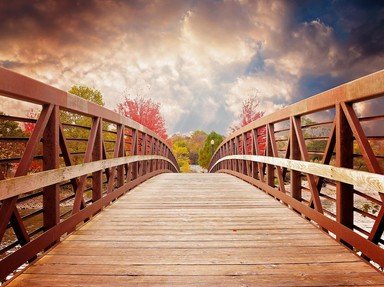Quiz Answer Key and Fun Facts
1. Crossing the Menai Strait from Wales to the Isle of Anglesey, the Britannia Bridge now carries road and rail traffic, but what happened to the original span on May 23, 1970?
2. Spanning the River Avon, the Clifton Suspension Bridge was based on a design by which great Victorian engineer?
3. Beside the Tay Rail Bridge can be seen the remains of the previous rail crossing of the River Tay. What happened to the original crossing?
4. Crossing the River Thames, which of the following is NOT a reason that influenced its design?
5. True or False: Does the bridge pictured in the image takes its name from the nearby village of Ironbridge where is it is located?
6. Pictured in this image is which famous Scottish bridge?
7. Built by Isambard Kingdom Brunel, the Royal Albert Bridge crosses the River Tamar, linking which two English counties in the area known as the West Country?
8. True or False: The famous Tees Transporter Bridge carries vehicles and passengers across the River Tees on a gondola.
9. Built by Dorman Long and Co Ltd, the Tyne Bridge is similar in design to another bridge that they built in which Australian city?
10. Crossing the River Thames, London Bridge was built to replace the previous bridge. What happened to the previous bridge?
Source: Author
mcsurfie
This quiz was reviewed by FunTrivia editor
stedman before going online.
Any errors found in FunTrivia content are routinely corrected through our feedback system.


